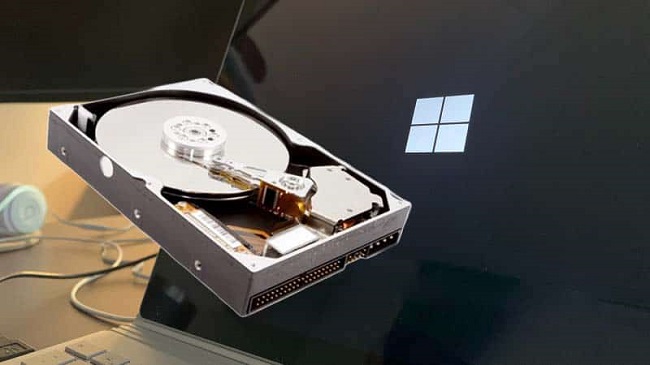Overloading your desktop or portable computer’s storage capacity might cause significant slowdowns. If your computer is slow, crashing frequently, or you can’t seem to find files, it might be time to give it a good cleaning.
Contents
- 1 What is Taking Up Space on My Hard Drive Windows 7
- 1.1 Method 1: Get rid of unused software and applications
- 1.2 Method 2: Organize your computer desktop
- 1.3 Method 3: Remove any potentially dangerous documents
- 1.4 Method 4: Clean up your hard drive with the appropriate software.
- 1.5 Method 5: Remove any temporary files
- 1.6 Method 6: Do something about the downloads
- 1.7 Method 7: Make a cloud backup
What is Taking Up Space on My Hard Drive Windows 7
If you’ve never done it before, here is how to free up disc space and boost storage on your computer.

Method 1: Get rid of unused software and applications
An old app may still be around even if you aren’t using it. Take charge of your laptop’s storage situation and master the art of eliminating unnecessary programmes to make room.
For this to work:
Step 1: Go to your desktop and select the “Start” option.
Step 2: To access software, click the “Apps” tab.
Step 3: Then go to “Apps and Features.”
Step 4: Use the size column to quickly identify the space-hogging apps.
Step 5: Don’t keep useless software around; select it and hit “Uninstall.”
Read Also:
Method 2: Organize your computer desktop
There is a better option than the default desktop that many of us use. Computers can become unnecessarily sluggish if their desktops are overrun with unnecessary files, as doing so requires the constant usage of operational memory.
Any extraneous data can be deleted, and the remaining files can be sorted into the appropriate Documents, Videos, and Photos directories. In this way, you can free up space on your hard drive without sacrificing any essential information.
Method 3: Remove any potentially dangerous documents
While modern computers are incredibly space-efficient, there are still file formats that can quickly fill up even the most generous hard drive.
In order to determine which files are the largest:
Step 1: The Windows Explorer must be opened (File Explorer).
Step 2: Choose “This Computer”
Step 3: In the upper right, you’ll see a search field; enter “size” there.
Step 4: You’ll have a range of options for file sizes, from “Empty” to “Gigantic.”
Step 5: Examine the larger files first to determine if they contain any useful information.
Step 6: If they aren’t needed, delete them from your computer.
Step 7: Follow this procedure with all of the huge files until your storage needs are adequately met.
Method 4: Clean up your hard drive with the appropriate software.
Need to free up space on your computer’s hard drive but don’t want to instal new software? As a helpful tool, Disk Cleanup is preinstalled on all Windows 10 computers and offers a single click solution for removing unused system files and freeing up valuable storage space. Windows may automatically detect which ones it no longer requires and delete them for you.
- Ask Cortana to clean up your disc space, or type “disc cleanup” into the search bar.
- Select “Drive: C” to begin the process, which may take several minutes or more on the first try.
Method 5: Remove any temporary files
To free up space, clearing your browser’s cache and cookies is a good place to start. Cookies, pictures, and text files are only some of the data left behind from each online visit that facilitate subsequent visits to the same site.
There’s no reason to keep these files around if you’re concerned about privacy or if you just need the space. You should consult your browser’s documentation to learn the best method for erasing these files. The Windows utility can also be used to delete temporary files.
A speed boost in your browser experience can be seen right away by clearing your cache, removing cookies, and erasing temporary files.
Method 6: Do something about the downloads
One of the easiest ways to free up space on a laptop’s hard drive is to go through the many downloads that have accumulated on your device.
Numerous people, including yourself, have probably stored away media files, images, and documents in portable document format (PDF) that you may or may not ever use again. However, you should check your downloads folder and transfer any necessary files to more permanent locations.
When you’re done, pick “All” and then “Delete” to get rid of the rest. We’re finished! That’s how you can get more space on your computer.
Read Also:
Method 7: Make a cloud backup
In the end, there may come a point when your computer simply doesn’t have enough space for all of your data. This is why experts advise maintaining a frequent cloud backup of your most crucial data.
This is the most secure way to free up space on your smartphone without erasing any of your data, so it’s a great option if you’re worried about the state of your hard drive, losing your device, or any other catastrophes that could compromise your contents.
Although it’s important to back up your data frequently, it’s not always easy to put a reminder in your calendar. Inconsistency can put sensitive information at risk and cause excessive data to be delivered all at once.
Choose the utilities integrated into most computers and laptops meant to automate this procedure to divide the effort down into manageable portions and ensure you don’t fall behind on your backups.
Backup solutions are available for both HP® and Windows services. Make sure this is set to run at least once a week, if not every night, in your preferences.




